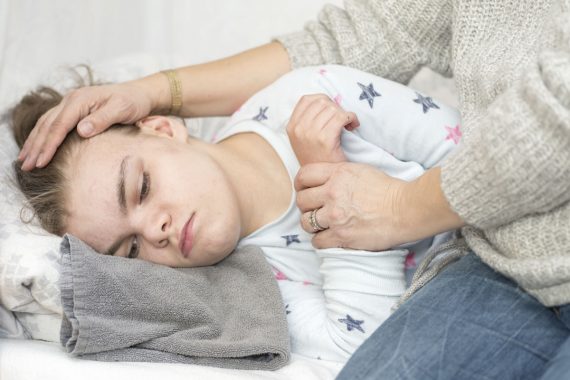How to approach possible Covid-19 infection in children and guidance on school attendance
This information is sourced from the The UK Research and Innovation (UKRI), the RCGP, the Royal College of Paediatric and Child Health (RCPCH) and an NHS Primary Care Bulletin:
PLEASE NOTE: THIS IS NO LONGER RELEVANT AND IS NOT BEING UPDATED BUT HAS BEEN LEFT ON THE SITE FOR REFERENCE PURPOSES ONLY
Symptoms of Covid-19 in children:
- Most infected children present with mild symptoms or are asymptomatic
- Children’s symptoms vary slightly from those seen in adults and tend to be milder
- The most common presenting features in children are cough and fever (more than 50% of cases) ; upper respiratory tract symptoms occur in 30-40%; diarrhoea and vomiting present in approximately 10% of cases
- There are reports of infants presenting with fever but no respiratory symptoms
- Less commonly reported symptoms include thoracic pains, somnolence, febrile convulsions, lower limb pains, cutaneous manifestations and symptoms of viral conjunctivitis
Are there any signs that could help differentiate Covid-19 from other childhood respiratory viral infections?
- Children if unwell with a temperature are more likely to have another pathology rather than Covid-19
- There appears to be little in the way of clinical signs in children to differentiate Covid-19 from other childhood respiratory virus infections
- Covid-19 has been detected in combination with other viral and bacterial infections
- For this reason, any child or young person with the diagnostic criteria for Covid-19 should isolate with their family and apply for a test
What is the current guidance on assessing febrile children from NHSE?
- In June 2021 NHS England advised GPs that all children under five with respiratory symptoms are considered for face-to-face consultations
What are the current RCGP top tips for assessing febrile children?
- Clinical assessment should include vital signs even when consulting remotely
- Consider asking if the family own their own thermometer or pulse oximeter
- Describe to the parent / carer how to perform a capillary refill test and observe it being completed
- You can count the respiratory rate over a video call and there are apps such as ‘R rate’ that patients can download to count it themselves
- Ask about signs of deterioration and always check for the risk of sepsis
- If a child is very unwell, they are much more likely they have another diagnosis than Covid-19
- Stable children presenting with a persistent fever should be discussed as soon as possible with secondary care to determine if blood tests and paediatric review is required in case of PIMS-TS
Which symptoms will warrant testing for Covid-19 and children remaining away from school whilst awaiting results?
- Children with simple cold symptoms such as coryzal symptoms (runny noses) or sore throats without fever who would normally have attended schools in other times should not be tested for Covid-19
- This will ensure that children are not unnecessarily kept away from schools and exposed to inappropriate testing
- Symptoms which warrant a Covid test and adherence to isolation guidance are: new continuous cough, fever, loss of, or change in, sense of smell or taste
- However from 2nd October 2020 PHE have advised that it is NOT a requirement for the patient to meet the definition of a possible Covid-19 case to access community testing, if the test is considered necessary by a clinical professional
Is it safe to give ibuprofen to a child who has tested positive for Covid-19 or is highly likely to be positive?
- There is currently insufficient evidence to establish a link between use of ibuprofen, or other NSAIDs, and contracting or worsening of Covid-19
- Experts at RCPCH recommend that parents treat symptoms of fever or pain related to Covid-19 with either paracetamol or ibuprofen
Atypical Kawasaki disease/ PIMS-TS:
The symptoms are: persistent fever >38.5°C, evidence of single or multi-organ dysfunction (shock, cardiac, respiratory, renal, gastrointestinal or neurological disorder) with signs of inflammation (neutrophilia, elevated CRP and lymphopaenia) (See clinical and laboratory features page 4)
Written by Dr Poppy Freeman
See also:
11 primary care pathways for remotely assessing children (includes remote assessment of fever, cough and breathlessness)

















